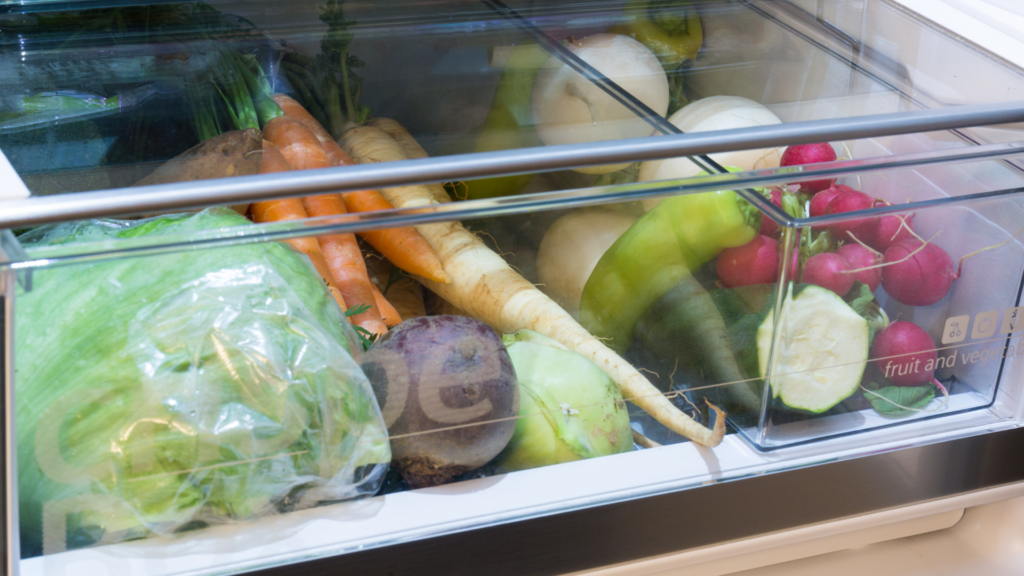Winter Meal Planning: Seasonal Foods To Save Money
Winter brings chilly temperatures and higher heating bills, making it the perfect time to focus on budget-friendly meal planning. Although many people believe that fresh produce options are limited in winter, there are plenty of seasonal foods that offer excellent value and nutrition during the colder months.
Why Winter Seasonal Eating Makes Financial Sense
Winter seasonal foods are often heartier and have longer shelf lives than delicate summer produce. This means less food waste and more value from each grocery trip. Many winter staples can last weeks or even months when stored properly.

The cost per meal is typically lower with winter foods as well. Winter vegetables tend to be filling, nutritious, and often less expensive per pound than out-of-season alternatives. This makes them ideal choices for frugal households.
Note: Food prices can vary significantly depending on your location, the stores available in your area, and even from week to week, based on sales and supply chain fluctuations. The price estimates in this article serve as general guidelines; your actual costs may be higher or lower. Always check local prices and adjust your meal planning accordingly. Northern areas may see higher produce prices in winter, while southern regions might have more locally grown winter options available.
Winter Superstar Foods
Budget-Friendly Winter Vegetables
- Winter squash (butternut, acorn, spaghetti, kabocha): If stored properly, these can last for months in a cool, dry place
- Root vegetables (carrots, parsnips, turnips, rutabagas): Often available in bulk bags at significant savings
- Potatoes (sweet, russet, gold, red): Versatile, filling, and among the most economical foods per calorie
- Cabbage: Incredibly affordable and keeps for weeks in the refrigerator
- Brussels sprouts: Often on sale after the holidays
- Onions & garlic: Essential flavor builders that store well for months
- Celery & celery root: Add flavor to soups and stews economically
- Leeks: More affordable in winter, and they add a subtle onion flavor to dishes
Hearty winter greens, such as kale, collards, and Swiss chard, are nutritional powerhouses that often go on sale during the winter. They’re much more economical than delicate spring greens and can withstand longer cooking times in satisfying winter meals.
Affordable Winter Fruits
- Citrus fruits (oranges, grapefruit, clementines, mandarins) are often sold in bags or boxes at lower per-unit costs, making them a budget-friendly and nutritious choice.
- Apples & pears: Many varieties store well through winter when kept in a cool place
- Bananas: Consistently budget-friendly year-round
- Frozen berries: More economical than fresh in winter, perfect for smoothies and baking
Consider buying citrus in bulk when on sale. Oranges and grapefruits can last several weeks when refrigerated, and their bright flavors help combat winter doldrums at a fraction of the cost of summer berries.
Smart Winter Meal Planning Strategies
Embrace one-pot meals that stretch expensive ingredients. Soups, stews, and casseroles use smaller amounts of protein while maximizing affordable vegetables. They also typically reheat well, reducing the need for takeout on busy evenings.

Plan meals around your oven use. When you’re baking something, take advantage of the heated oven to roast vegetables or bake potatoes for another meal. This saves on energy costs and meal prep time later in the week.
Make friends with your slow cooker or pressure cooker. These appliances can transform tough, inexpensive cuts of meat and hearty winter vegetables into delicious meals with minimal effort. They’re particularly good for beans, which are winter budget superstars.
Winter Pantry Staples
Keep these affordable staples on hand to pair with seasonal produce:
- Dried beans and lentils
- Whole grains (rice, barley, oats, quinoa)
- Pasta and noodles
- Canned tomatoes and tomato paste
- Broths and stocks
- Frozen vegetables for quick meal additions
Stock up during post-holiday sales when many cooking basics are discounted. January often brings “healthy eating” promotions with sales on beans, whole grains, and canned goods.
Sample Money-Saving Winter Meal Ideas
Breakfasts
- Slow Cooker Steel-Cut Oats: Prepare a big batch with apples and cinnamon. Cost: about $0.50 per serving.
- Sweet Potato Breakfast Bowl: Topped with yogurt, banana slices, and a sprinkle of nuts. Cost: around $1.25 per serving.
- Winter Fruit & Yogurt Parfaits: Layer yogurt with frozen berries and granola. Cost: approximately $1.00 per serving.
Lunches
- Cabbage and White Bean Soup: Hearty, filling, and costs about $0.75 per serving.
- Roasted Winter Vegetable Bowl: Batch-roast seasonal vegetables and serve over rice or quinoa. Cost: around $1.50 per serving.
- Potato and Leek Soup: Creamy and comforting without dairy. Cost: about $1.00 per serving.
Dinners
- Bean and Vegetable Chili: Combine a small amount of ground meat with beans and winter vegetables. The cost is about $1.25 per serving.
- Roasted Chicken with Root Vegetables: The whole chicken can be used for multiple meals. It costs around $2.50 per serving.
- Cabbage Roll Casserole: Layers of cabbage, ground turkey, rice, and tomato sauce. Feeds a family for under $10.
- Winter Vegetable Curry: A blend of butternut squash, cauliflower, and potatoes in a rich, flavorful sauce served over rice. Cost: about $1.75 per serving.
Sides
- Braised Cabbage with Apples: A sweet-savory side for about $0.50 per serving.
- Roasted Root Vegetables: A colorful medley of carrots, parsnips, and turnips for approximately $1.00 per serving.
- Mashed Potatoes and Cauliflower: Stretches potatoes with seasonal cauliflower for a lower-cost side dish.
Snacks & Desserts
- Baked Apples: Stuffed with oats, cinnamon, and a touch of maple syrup. Cost: about $0.60 each.
- Citrus Fruit Salad: Refreshing and vitamin-packed for around $1.00 per serving.
- Banana “Ice Cream” consists of frozen bananas blended to a creamy consistency and topped with chocolate chips. It costs approximately $0.40 per serving.
These meals overlap ingredients to minimize waste and maximize your grocery budget. For example, a head of cabbage can be transformed into soup, a side dish, and a component of a casserole throughout the week.
Preserving Winter Value
Discover how to store winter vegetables properly to prolong their shelf life. Most root vegetables keep best in cool, dark places with good air circulation. Cabbage family vegetables last the longest in the refrigerator when stored in loose plastic bags.

Freeze citrus zest and juice in ice cube trays when you find a good sale. The frozen cubes add bright flavor to winter dishes for months to come. This is particularly useful when making the most of bulk purchases.
Consider dehydrating any vegetables starting to lose their prime. Dehydrated vegetables add concentrated flavor to soups and stews while preventing waste. They’re also lightweight and compact for storage.
Shopping Smart in Winter
Don’t overlook frozen vegetables. They are often flash-frozen at peak freshness and can be more nutritious and affordable than fresh, out-of-season options. They’re perfect for adding to soups and stews quickly.
Check the reduced-price produce section. Winter vegetables are hardy enough that even slightly imperfect ones are perfectly usable. For example, a somewhat soft butternut squash still makes excellent soup at a fraction of the regular price.
Consider joining a winter Community Supported Agriculture (CSA) program. Some farmers offer winter shares featuring storage crops and greenhouse-grown greens at prices comparable to or better than those found in grocery stores.
Final Thoughts
Winter meal planning doesn’t have to be complicated or expensive. Instead of paying premium prices for out-of-season produce, focus on what’s naturally abundant now. The hearty, satisfying nature of winter foods means a little goes a long way.
Batch cooking is especially valuable during the winter months. Spending a few hours on Sunday preparing big pots of soup or stew can provide multiple meals throughout the busy week, benefiting your wallet and stress levels.
With some thoughtful planning and a focus on seasonal ingredients, winter can be a time of delicious, nutritious, and budget-friendly eating. The money saved on groceries can help offset those higher winter utility bills or build your savings for future goals.

